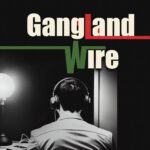Podcast: Play in new window | Download
Subscribe: Apple Podcasts | Android | RSS | More
This second episode recounts in great detail the interactions between jurors in the famous trial of Al Capone for income tax evasion.
CAPONE JURORS
NATE C. BROWN, 64, retired, Protestant, SL Charles.
BURR DUGAN, 54, farmer Catholic McClare.
T. HEINRICHS, 52, engineer. Protestant, Thornton.
GEORGE H. LARSEN, 41, breadmaker, Protestant, Thornton
A. G., 65, country store owner, Protestant. Prairie View.
W. F. McCORMICK, 58, receiving clerk. Catholic. Maywood.
M. E. MERCHANT, 30, real estate broker. Catholic, Waukegan.
ARTHUR O. PROCHNO 49, insurance, Protestant, Edison Park
C. SMART, 43, painter, Protestant, Libertyville.
JOHN A. WALTER, 54, abstracter. Protestant.,Yorkville.
LOUIS P. WEIDLING, 62, pointer. Protestant, Wilmington.
LOUIS T., 64, retired, Protestant, Chicago.
“We were taken to quarters in the Great Northern hotel. We had to stay in our rooms. There were three rooms for twelve men. Some of us had to sleep double. We readily saw that we were going to

be more prisoner than the defendant in the case. We decided we might as get acquainted. We divided into groups which could be broadly and roughly defined as students, gossipers, and jokers. Among us, it developed, were a couple of men who had as jurors in the income tax case of Ralph Capone, Al’s brother, a year or two before. They had convicted him. I was told that these men wanted to get on Al Capone’s case to give him some of the same medicine.
Our guards were Deputies Frank Otto and Ladd Purcha. They telephoned our families that we would not be home. Next all our clothing was minutely examined. Pockets were turned Inside out. Cuffs of trousers were rolled down. Even sleeves were turned inside out. Correspondence was carefully censored. We were not allowed to talk over the phone to our families, even in the presence of a deputy. We were not allowed to see our wives.
Our newspapers were strictly censored. The deputies wielded scissors very expertly, cutting out headlines and stories pertaining to the Ca. pone trial. Once they slipped. We saw a five-line item about Philip D’Andrea, Capone’s bodyguard, who was arrested in court while carrying a gun. This little item was con. in a news column entirely unrelated to the Capone case. This 2 how the deputies missed it. When they learned about it they became greatly excited. I assured them, however, that only a few of LIs had seen the item. I destroyed it. Not only newspapers, but magazines also, were censored. Nor did the radio escape. We wanted to go in a body to either a Protestant or Catholic church. This was denied.

It wasn’t long before I clashed with the jury guards. I took notes of the testimony the first. morning. During the recess the guard ordered me to stop taking notes. He said it was not allowed. I told him to ask the judge. He said he could not do this. I pointed out that jurors ought to be permitted to take notes the same as lawyers and others who were more familiar with the trial of cases. I don’t know if the guard asked the judge, but, anyway, I was permitted to take notes. They proved helpful later on.
As the trial progressed I for one got the idea that the government lawyers were making a good case out of nothing and that they did not want Capone’s tax money, which he had offered in compromise, so much as they wanted him and the honor that went with a conviction. We all were impressed with the bearing and evident fairness of Judge Wilkerson and the conduct of the prosecution and defense lawyers. District Attorney George E. Q. Johnson, Dwight N. Green, Samuel Clawson, and Jacob I. Grossman for the prosecution. Michael Ahern and Albert Fink for the defense. We naturally studied Capone considerably and noted that he had a ready smile.
We were highly concerned with every bit of evidence, every exhibit, every witness. We were particular- ly interested in the grandiose things that we had read about Capone, some of which now were being un- folded to us . We heard about h is Florida mansion and walled-in estate on Palm Island. We tried to visualize it. Some of us recalled seeing pictures of Ca- pone clad in a bathing suit and fishing from the deck of his yacht.
Witnesses told of huge sums that Capone spent on entertainment. In addition there was the evidence on gambling. Stacks of checks for thousands of dollars Were introduced. These were described as rep- resenting gambling gains and losses. This impressed us. So did the diamond belt buckles that Capone gave to his friends.
The trial was long. We naturally tired at times. This probably was due more to our confinement than to anything else, We were practically prisoners In our hotel. Our meals excellent but too heavy, considering the little exercise we were allowed. One of the Jurors, Mr. Merchant, became Ill. For a time we thought the case would be delayed.
Walking was our main exercise.
Occasionally we were on short strolls in Michigan Avenue, but mostly our walks were around the federal building during the noon recess. This was not always pleasant. Crowds stared at us as

though we were . Many people apart from newspaper men trick to take our pictures. We didn’t want our pictures taken. Whenever one of us spotted a camera we d give a warning and dodge or turn our heads.

We had our reasons. Most of us feared that pictures might make us or our families targets for annoyance. This actually happened in my case, I learned later. While I was on the jury many automobiles drove slowly past my house, their occupants gazing intently into the front porch. Several times practical jokers called my wife, only to hang up abruptly. This worried her.
Inside the courtroom we forgot outside worries and gave complete attention to the case. We realized its importance. We realized the mighty battle going on between the two groups of lawyers. Without prejudging Capone’s case, we were not unconscious of what he represented in the public eye. We could not help knowing he was the biggest representative of gangland in the world. And there he was, a big, fat man, facing the bar of justice like any other man accused of crime, and we, twelve ordinary citizens, sitting in judgment.
Near the end of the second week we realized that this case was coming to an end. We were quite happy, because all of us were anxious to get home, and some of us were on edge. Our nerves were getting a little ragged. One of the men had been ill. A few of us thought the case would be over by Friday, Oct. 16. That was the day that dissension first broke out. By that time it was evident that the jury was separating into factions on the question of guilt or innocence.”
This is sample of the Chicago Tribune first person account by Capone juror, Authur O. Prochno.
To go to the store click here
To rent Gangland Wire, the documentary, click here
To subscribe on iTunes click here, give me a review and I will send you a link to see the film for free.


Very interesting,I have never heard of this part of the trial.
Too bad ordinary citizens were treated worse than criminals.
Great research. Joe Dee Naples,FL.